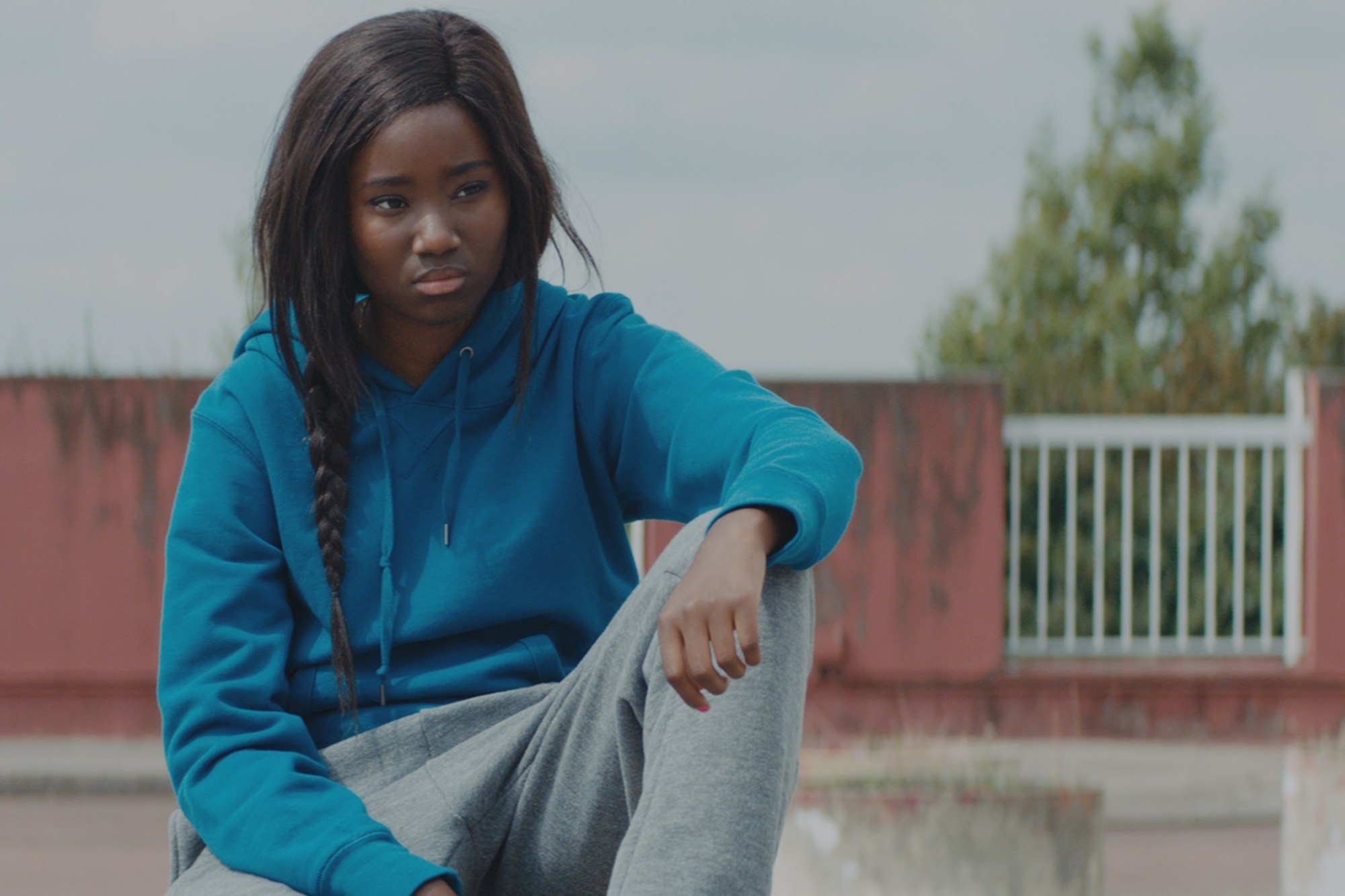Bande de Filles literally translates as “gang of girls”. It is also the title of a wave-making French film by Celine Sciamma, an indie director known for her queer statements about identity and femininity. This time, she intersects her preoccupation with gender with a racial and social enquiry: the cast is 100 percent black; the movie is entirely filmed in Paris’ riotous banlieues. And beyond the core theme itself – a poetic yet potent observation of friendship in teenage years – the production of the movie exposed a major issue in France today. Sciamma revealed that all the actors had been found through street casting. Why? Simply because “acting schools in France are all-white. There are little to no classically trained black actors, because there are virtually no roles for them outside the usual cliches,” she told the French media when the film came out. And she may have a point.
Here is the story in a nutshell: France has a long and rather bloody colonial history (although it is hardly the only nation with a dubious track-record in this respect). It mercilessly conquered numerous parts of Africa and the Maghreb throughout the 19th century. Today, over 19% of the population, some 12 million people, is of immigrant descent according to the country’s national statistic bureau: make no mistake, this is a very diverse country – yet the role non-white French citizens play in public life is limited to say the least; and when they do, it is often reduced to stereotypes, or worse, exposed to racial prejudice.
Can you really blame fashion? It is a mirror of a society’s ideals and desires, they look at the market, and this is still what the French still want.
Take show business: Omar Si, of Senegalese descent, is best known for roles playing a somewhat endearing thug in the French blockbuster Les Intouchables, or an African migrant in the movie Samba. Public figures, politicians, models are few and far between. (Christiane Taubira, Minster of Justice is one of the rare exceptions – and had to put up with being compared with a monkey on Twitter not so long ago). Black singers outside a hip hop/soul/r’n’b field are close to non-existent.
And the luxury world isn’t any better. Lancome only recently launched a wider line of darker foundations; Balmain is thus far the only house to employ a black designer in Olivier Rousteing (albeit adopted and raised in a white bourgeois environment).
“Sometimes, you can’t help but feel militant,” feels Papou Jahmal, a hip Parisian photographer, who found himself commissioned to shoot a childrenswear story; out of a dozen of children, the single black model was given two outfits: boxing gloves or a circus outfit (both topless).
In adult fashion, things rarely get better: “There are basically two typologies of models, dark skinned and bald, or a ultra-light with a straight weave. This always leave me thinking: where are the brown girls?” notes Jean Paul Paula, a stylist and long-time collaborator of WAD magazine, one of the few magazines in the country to insist on a more diverse vision of culture. “But can you really blame fashion? It is a mirror of a society’s ideals and desires, they look at a market. And deeply, this is still what the French still want,”he added.
It was sad (though not very surprising) to notice that when Flora Coquerel was elected Miss France last year, her mixed race origins bothered thousands of Frenchmen to the bone. “Shouldn’t this contest be open to white girls only?” was a common emanation of the angry Twitter-sphere. The situation is of course not improved by the extreme right-wing Front National party fanning the flames of deeply rooted racism that are still very present in everyday French life.
Today, this has to do with France living and staying alive through its heavy marketing to the outside world. Parisian chic is extremely bankable.
“France is a deeply patriarchal culture, and women are included as part of this image, of what the country has to offer. It is built on Marianne, the allegorical figure of the French republic. The country is built on the idea of white motherland, and Republican values, ” explains sociologist Carol Mann, adding that “in patriarchal cultures, women are classically seen as living advertisements for their countries. In France, this still goes hand in hand with a sense of racial hierarchy and Franco-French supremacy.”
Today, this has to do with France living and staying alive through its heavy marketing to the outside world. Tourism is one of the leading industries, and its feminine ideal falls into that: ‘la française’ and ‘parisian chic’ are extremely bankable. It is constructed to fall into continuation with a bourgeois, intellectual, white history and aesthetics – and there is not a lot of room – or willingness – for a truly diverse cultural landscape. Stereotypes are easy, and mass-market, consensus-driven media production thrive on easy classifications. Nevertheless, with growing middle-class minorities, show-business will have to rethink elitism with a bit more color in it. Even in France.
Credits
Text Alice Pfeiffer
Film still from Bande de Filles by Celine Sciamma
